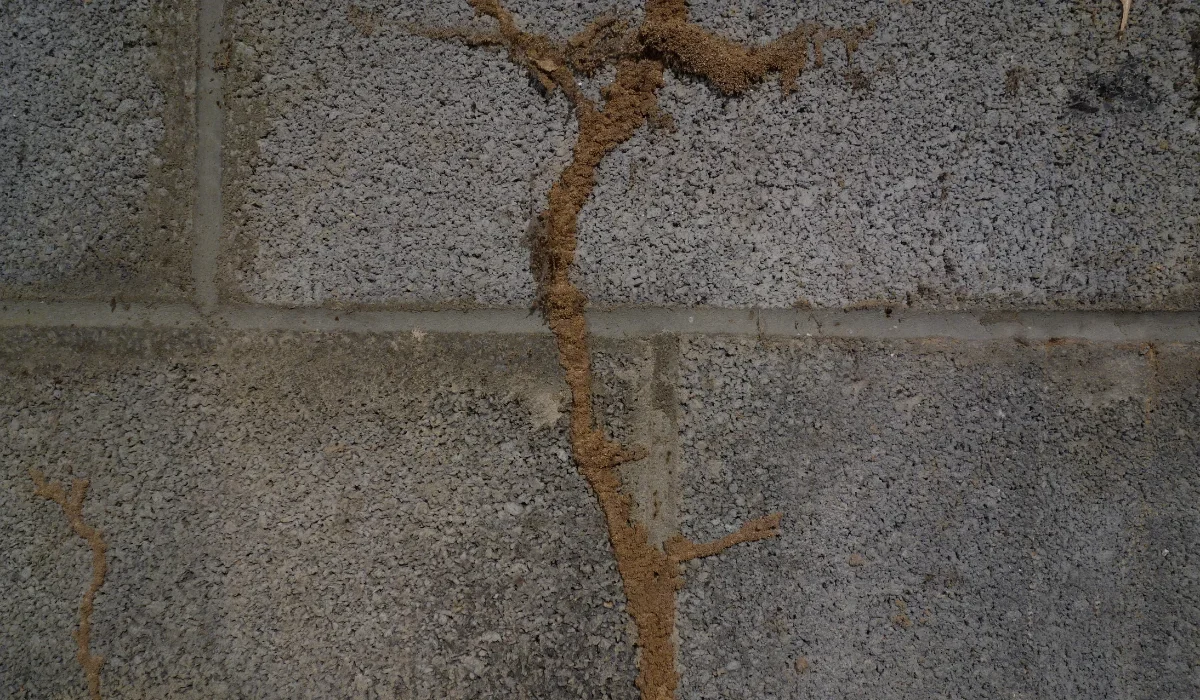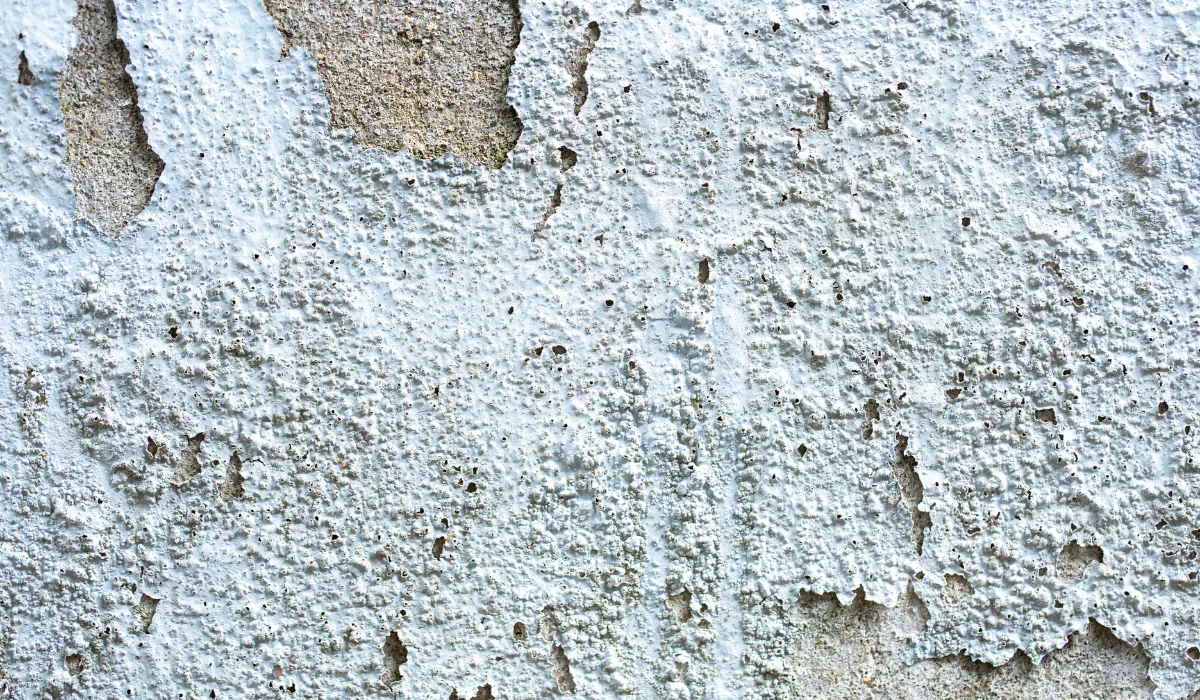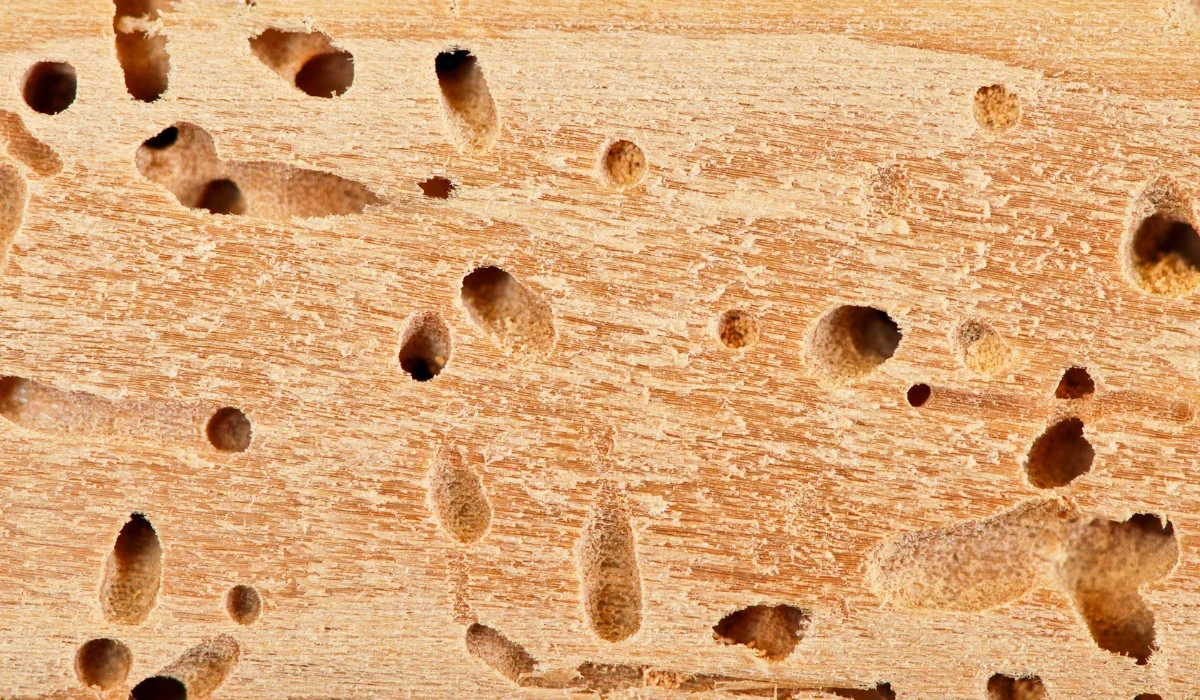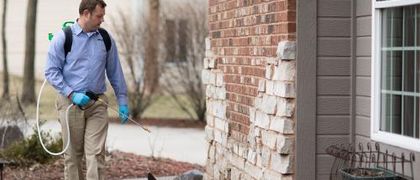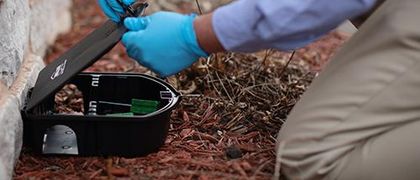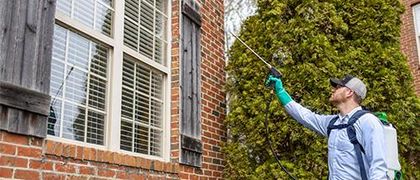The Top Signs of Termites to Look Out For
Termites are one of the most destructive pests homeowners can encounter. They quietly invade wooden structures, consuming cellulose and weakening your home’s foundation. An infestation can go unnoticed for months—or even years—leading to significant damage and costly repairs.
By knowing the telltale warning signs, you can catch a termite problem early and seek professional control before it worsens.
Here are the top signs of a termite infestation to watch for.
Key Takeaways
- Termites cause damage before you see them, but they leave behind signs like mud tubes and hollow wood.
- Tiny holes, termite droppings, peeling paint, and discarded wings mean termites may be inside your home.
- Sticking doors, sagging floors, and warped frames can be some of the signs of serious termite damage.
- DIY fixes don’t stop termites, but professional pest control can protect your home from more damage.
1. Mud Tubes Along Your Home’s Foundation
Subterranean termites are the most common termite species found in the U.S., and they rely on moisture to survive.
To travel between their colony and a food source, they build mud tubes along a home’s foundation, crawlspace, or walls. These thin, tunnel-like structures are a sure sign of termite activity.
If you break a mud tube open and find live termites or worker termites inside, you likely have an active infestation.
2. Damaged or Hollow-Sounding Wood
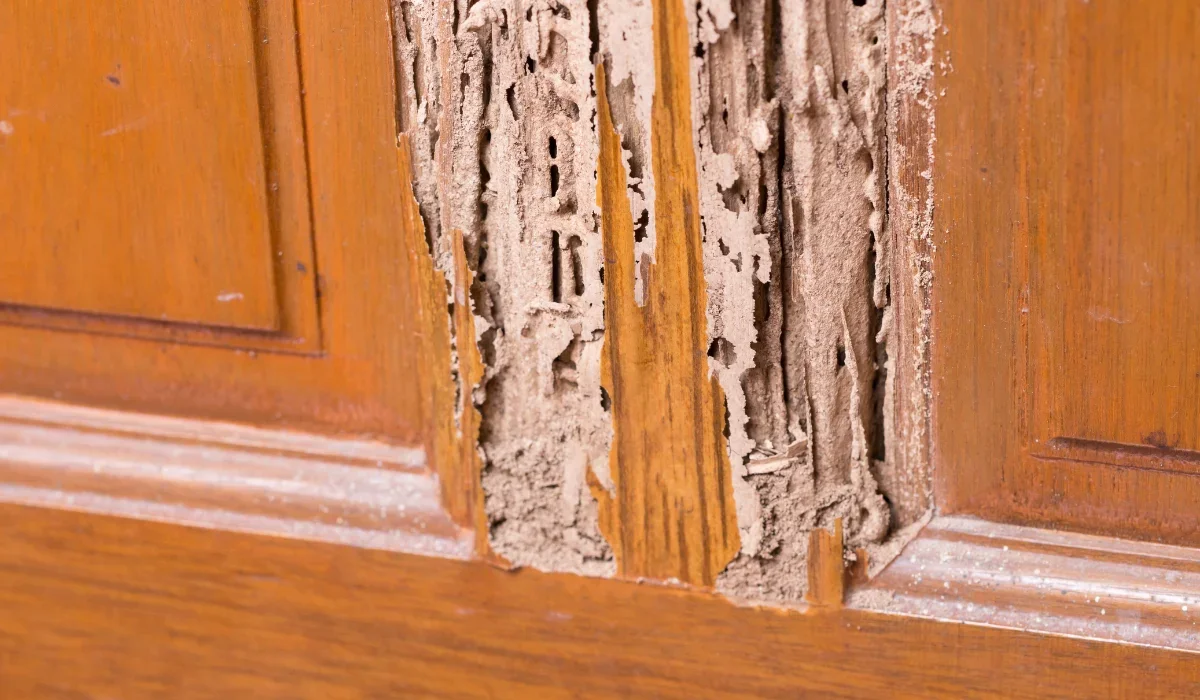
Termites consume wood from the inside out, often leaving a thin outer layer intact.
If you tap on wooden structures around your home, such as door frames, windowsills, or baseboards, and they sound hollow, it’s a strong indication of termite damage.
In severe cases, wood damage may cause floors or walls to feel spongy or weak.
3. Termite Droppings Near Wooden Structures
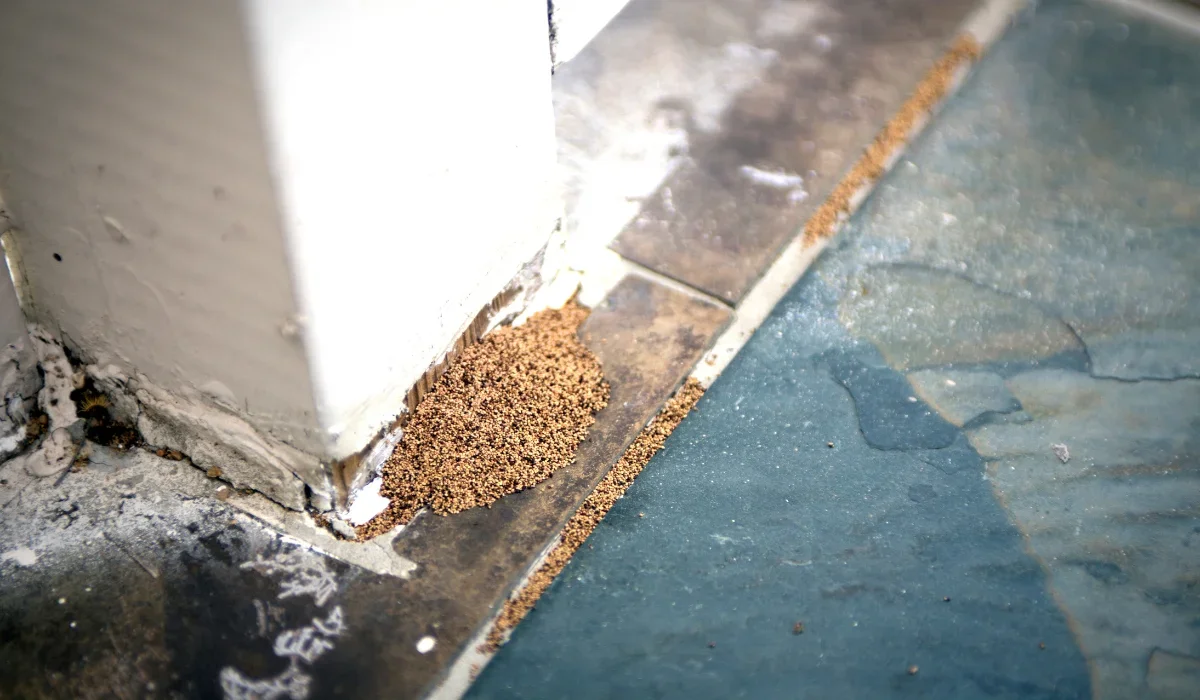
Another common type of termite is the drywood termite. They don’t need soil to survive, so they live inside the wood they infest. Instead of using mud tunnels, they push out their waste, known as frass, from small holes in the wood.
These termite droppings look like tiny piles of sawdust or coffee grounds and often collect near sills, baseboards, or wooden furniture.
4. Bubbling or Peeling Paint on Walls
At first glance, peeling paint, bubbling paint, or blisters on drywall may seem like water damage. However, these could be signs of termites tunneling beneath the surface.
When they eat through drywall, they create air pockets that cause the outer layer to separate.
If you notice this along with other signs of damage, schedule an inspection to keep the problem from getting worse.
5. Discarded Termite Wings Near Windowsills and Light Fixtures
Flying termites, also known as alates or termite swarmers, are reproductive termites that emerge to start new colonies.
After the swarming season, they shed their termite wings, leaving piles of them near windowsills, door frames, and light fixtures.
If you see termite swarms, especially in spring or after rain, it’s a serious red flag.
Seeing them in your neighborhood or around your home means a nearby colony is expanding—possibly inside your home’s foundation or wooden structures.
6. Tiny Holes and Pinholes in Drywall or Wood
Small holes, pinholes, or tiny exit holes in drywall or damaged wood can indicate termite activity. These openings may be where they push out frass or move to new feeding areas.
Unlike woodpecker damage, which creates jagged holes, termite exit holes are smooth and uniform. If you notice them, it’s crucial to check for other warning signs of an infestation.
7. Structural Damage and Warped Door Frames
As termites eat through wooden structures, they weaken load-bearing beams, framing, and supports. Over time, this can cause doors and windows to stick, door frames to warp, and even floors to sag.
If you’re experiencing these issues without an obvious cause, they could be the culprit.
A termite inspection can confirm if you have an infestation.
What to Do If You See Signs of a Termite Infestation
If you’re seeing signs of termites, don’t ignore them. They work fast and can cause serious structural damage before you even realize they’re there.
DIY solutions won’t stop a growing termite colony—but we can.
At Miller Pest & Termite, we specialize in professional termite control, using baiting systems, liquid treatments, and barrier protection.
Our team of exterminators serves Des Moines, Kansas City, and Omaha, providing thorough inspections to pinpoint the problem and recommend the right termite treatment.
Think you might have termites?
Call us today to schedule a free inspection, and let’s protect your home before the damage gets worse.
Get Help Now!

